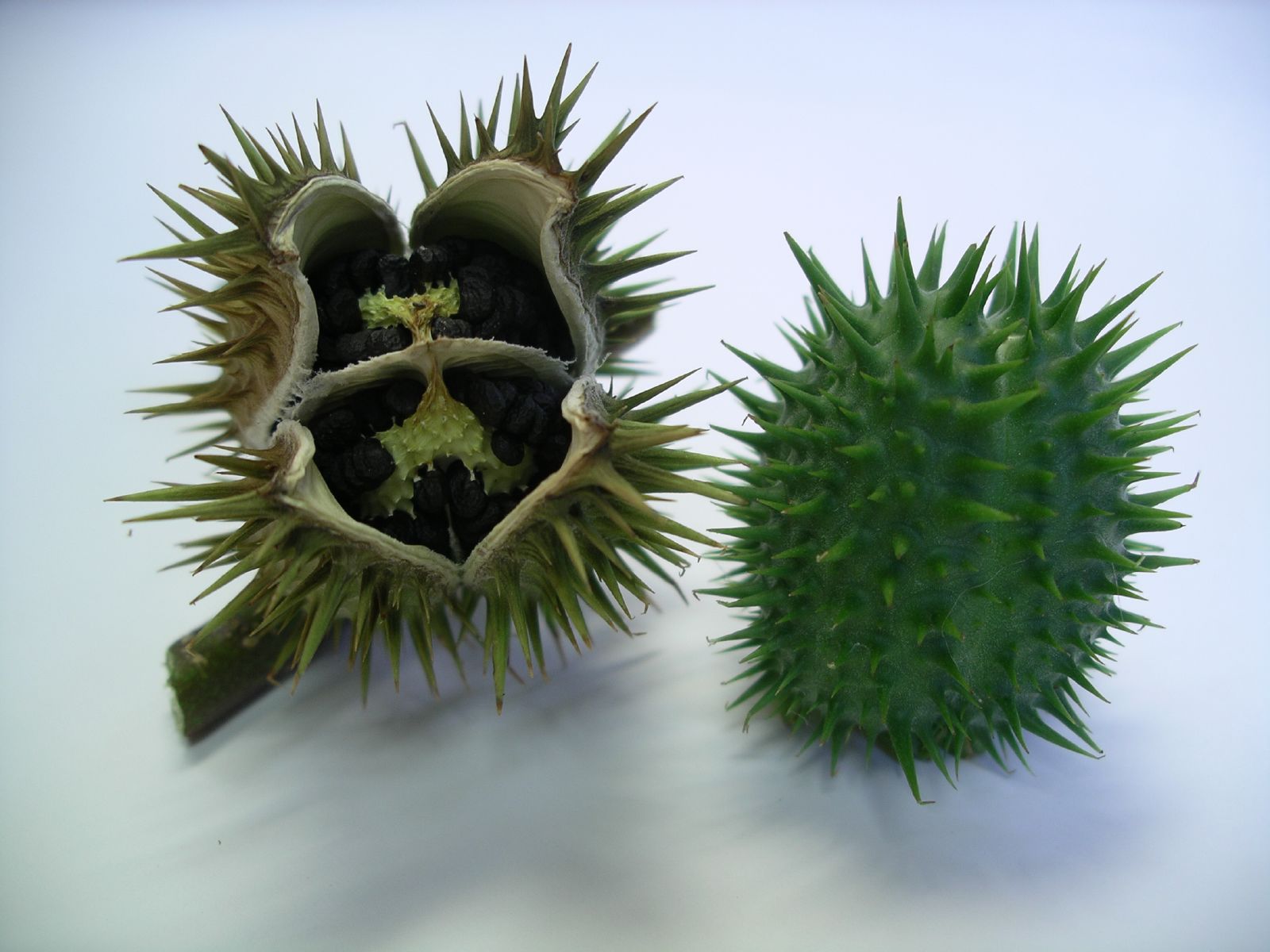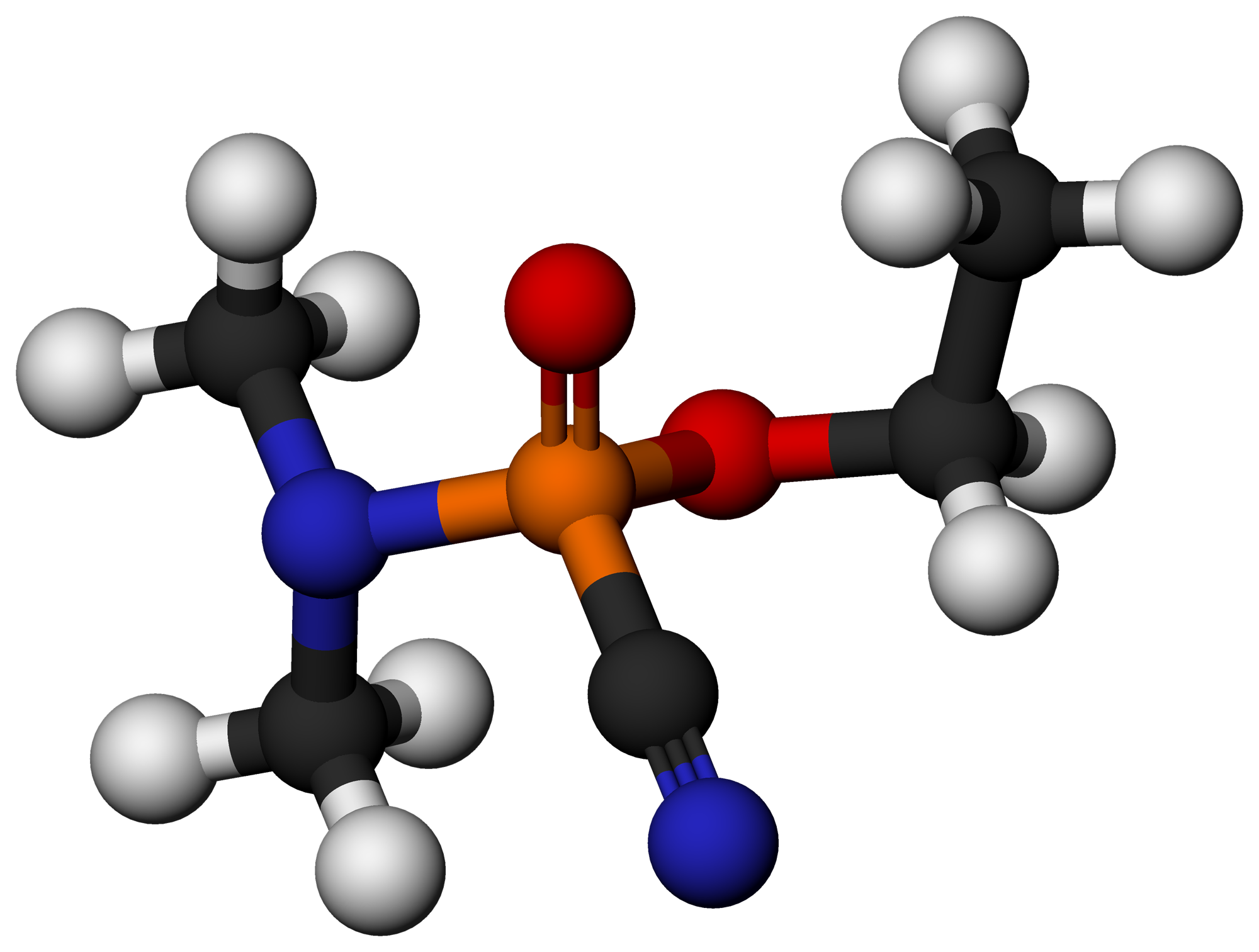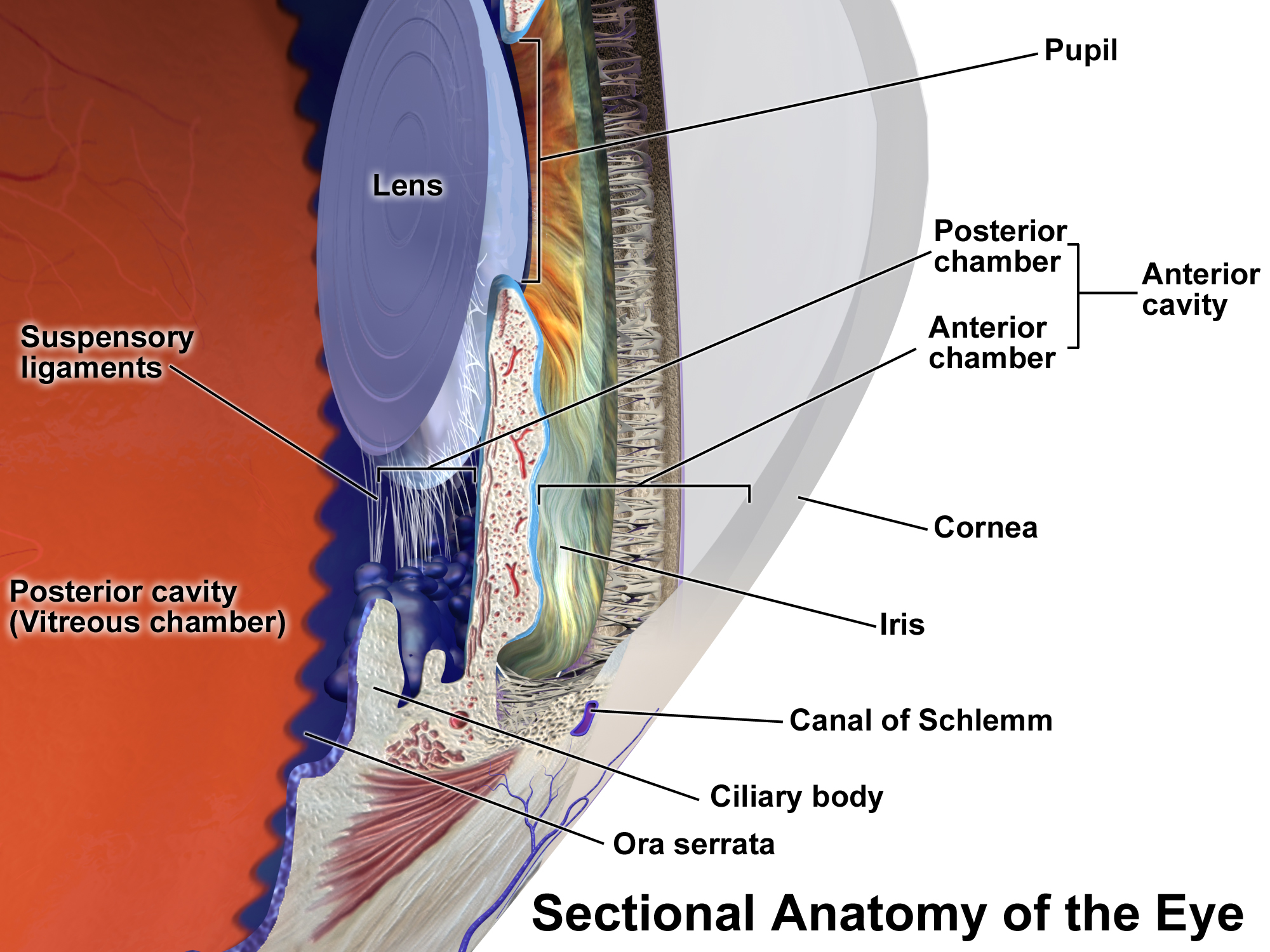|
Atropine
Atropine is a tropane alkaloid and anticholinergic medication used to treat certain types of nerve agent and pesticide poisonings as well as some types of slow heart rate, and to decrease saliva production during surgery. It is typically given intravenously or by injection into a muscle. Eye drops are also available which are used to treat uveitis and early amblyopia. The intravenous solution usually begins working within a minute and lasts half an hour to an hour. Large doses may be required to treat some poisonings. Common side effects include dry mouth, abnormally large pupils, urinary retention, constipation, and a fast heart rate. It should generally not be used in people with closed-angle glaucoma. While there is no evidence that its use during pregnancy causes birth defects, this has not been well studied so sound clinical judgment should be used. It is likely safe during breastfeeding. It is an antimuscarinic (a type of anticholinergic) that works by inhibit ... [...More Info...] [...Related Items...] OR: [Wikipedia] [Google] [Baidu] |
Atropa Belladonna
''Atropa bella-donna'', commonly known as deadly nightshade or belladonna, is a toxic perennial herbaceous plant in the nightshade family Solanaceae, which also includes tomatoes, potatoes and eggplant. It is native to Europe and Western Asia, including Turkey, its distribution extending from England in the west to western Ukraine and the Iranian province of Gilan in the east. It is also naturalised or introduced in some parts of Canada, North Africa and the United States. The foliage and berries are extremely toxic when ingested, containing tropane alkaloids. It can also be harmful to handle and/or touch these plants. These toxins include atropine, scopolamine, and hyoscyamine, which cause delirium and hallucinations, and are also used as pharmaceutical anticholinergics. Tropane alkaloids are of common occurrence not only in the Old World tribes Hyoscyameae (to which the genus Atropa belongs) and Mandragoreae, but also in the New World tribe Datureae—all of which bel ... [...More Info...] [...Related Items...] OR: [Wikipedia] [Google] [Baidu] |
Antimuscarinic
A muscarinic acetylcholine receptor antagonist, also simply known as a muscarinic antagonist or as an antimuscarinic agent, is a type of anticholinergic drug that blocks the activity of the muscarinic acetylcholine receptors (mAChRs). The muscarinic receptors are proteins involved in the transmission of signals through certain parts of the nervous system, and muscarinic receptor antagonists work to prevent this transmission from occurring. Notably, muscarinic antagonists reduce the activation of the parasympathetic nervous system. The normal function of the parasympathetic system is often summarised as "rest-and-digest", and includes slowing of the heart, an increased rate of digestion, Bronchoconstriction, narrowing of the airways, promotion of urination, and sexual arousal. Muscarinic antagonists counter this parasympathetic "rest-and-digest" response, and also work elsewhere in both the Central nervous system, central and peripheral nervous systems. Drugs with muscarinic antagon ... [...More Info...] [...Related Items...] OR: [Wikipedia] [Google] [Baidu] |
Datura Stramonium
''Datura stramonium'', known by the common names thornapple, jimsonweed (jimson weed), or devil's trumpet, is a poisonous flowering plant in the ''Datureae, Daturae'' Tribe (botany), tribe of the nightshade family Solanaceae. Its likely origin was in Central America, and it has been introduced in many world regions. It is an aggressive invasive species, invasive weed in temperate climates and tropical climates across the world. ''D. stramonium'' has frequently been employed in traditional medicine to treat a variety of ailments. It has also been used as a hallucinogen (of the anticholinergic/antimuscarinic, deliriant type), taken entheogenically to cause intense, sacred or occult visions.Schultes, Richard Evans; Albert Hofmann (1979). ''Plants of the Gods: Origins of Hallucinogenic Use'' New York: McGraw-Hill. . It is unlikely ever to become a major drug of abuse owing to effects upon both mind and body frequently perceived as being highly Dysphoria, unpleasant, giving rise to ... [...More Info...] [...Related Items...] OR: [Wikipedia] [Google] [Baidu] |
Nerve Agent
Nerve agents, sometimes also called nerve gases, are a class of organic chemistry, organic chemicals that disrupt the mechanisms by which nerves transfer messages to organs. The disruption is caused by the blocking of acetylcholinesterase (AChE), an enzyme that catalyzes the breakdown of acetylcholine, a neurotransmitter. Nerve agents are irreversible acetylcholinesterase inhibitors used as poison. Poisoning by a nerve agent leads to constriction of pupils, profuse salivation, convulsions, and involuntary urination and defecation, with the first symptoms appearing in seconds after exposure. Death by asphyxiation or cardiac arrest may follow in minutes due to the loss of the body's control over Respiration (physiology), respiratory and other muscles. Some nerve agents are readily vaporized or aerosolized, and the primary portal of entry into the body is the respiratory system. Nervous agents can also be absorbed through the skin, requiring that those likely to be subjected to su ... [...More Info...] [...Related Items...] OR: [Wikipedia] [Google] [Baidu] |
Anticholinergic
Anticholinergics (anticholinergic agents) are substances that block the action of the acetylcholine (ACh) neurotransmitter at synapses in the central nervous system, central and peripheral nervous system. These agents inhibit the parasympathetic nervous system by selectively blocking the binding of ACh to its receptor in nerve cells. The nerve fibers of the parasympathetic system are responsible for the involuntary movement of Smooth muscle tissue, smooth muscles present in the gastrointestinal tract, urinary tract, lungs, sweat glands, and many other parts of the body. In broad terms, anticholinergics are divided into two categories in accordance with their specific targets in the central and peripheral nervous system and at the neuromuscular junction: antimuscarinic agents and antinicotinic agents (ganglionic blockers, neuromuscular blockers). The term "anticholinergic" is typically used to refer to antimuscarinics that competitively inhibit the binding of ACh to muscarinic a ... [...More Info...] [...Related Items...] OR: [Wikipedia] [Google] [Baidu] |
Amblyopia
Amblyopia, also called lazy eye, is a disorder of sight in which the brain fails to fully process input from one eye and over time favors the other eye. It results in decreased vision in an eye that typically appears normal in other aspects. Amblyopia is the most common cause of decreased vision in a single eye among children and younger adults. The cause of amblyopia can be any condition that interferes with focusing during early childhood. This can occur from poor alignment of the eyes (strabismic), an eye being irregularly shaped such that focusing is difficult, one eye being more nearsighted or farsighted than the other (refractive), or clouding of the lens of an eye (deprivational). After the underlying cause is addressed, vision is not restored right away, as the mechanism also involves the brain. Amblyopia can be difficult to detect, so vision testing is recommended for all children around the ages of four to five as early detection improves treatment success. Glas ... [...More Info...] [...Related Items...] OR: [Wikipedia] [Google] [Baidu] |
Mandragora Officinarum
''Mandragora officinarum'' is the type species of the plant genus '' Mandragora'' in the nightshade family Solanaceae. It is often known as mandrake, although this name is also used for other plants. , sources differed significantly in the species they use for ''Mandragora'' plants native to the Mediterranean region. The main species found around the Mediterranean is called '' Mandragora autumnalis'', the autumn mandrake. In a broader circumscription, all the plants native to the regions around the Mediterranean Sea are placed in ''M. officinarum'', which thus includes ''M. autumnalis''. The names autumn mandrake and Mediterranean mandrake are then used. Whatever the circumscription, ''Mandragora officinarum'' is a perennial herbaceous plant with ovate leaves arranged in a rosette, a thick upright root, often branched, and bell-shaped flowers followed by yellow or orange berries. Because mandrakes contain deliriant hallucinogenic tropane alkaloids (atropine, scopolamin ... [...More Info...] [...Related Items...] OR: [Wikipedia] [Google] [Baidu] |
Bradycardia
Bradycardia, also called bradyarrhythmia, is a resting heart rate under 60 beats per minute (BPM). While bradycardia can result from various pathological processes, it is commonly a physiological response to cardiovascular conditioning or due to asymptomatic type 1 atrioventricular block. Resting heart rates of less than 50 BPM are often normal during sleep in young and healthy adults and athletes. In large population studies of adults without underlying heart disease, resting heart rates of 45–50 BPM appear to be the lower limits of normal, dependent on age and sex. Bradycardia is most likely to be discovered in the elderly, as age and underlying cardiac disease progression contribute to its development. Bradycardia may be associated with symptoms of fatigue, dyspnea, dizziness, confusion, and syncope due to reduced blood flow to the brain. The types of symptoms often depend on the etiology of the slow heart rate, classified by the anatomical location of a dysfunctio ... [...More Info...] [...Related Items...] OR: [Wikipedia] [Google] [Baidu] |
Tropic Acid
Tropic acid is a chemical with IUPAC name 3-hydroxy-2-phenylpropanoic acid and condensed structural formula HOCH2CH PhCOOH. It is a laboratory reagent used in the chemical synthesis of atropine and hyoscyamine. Tropic acid is a chiral substance, existing as either a racemic mixture or as a single enantiomer. Synthesis Tropic acid can be prepared by the Ivanov reaction between phenylacetic acid and formaldehyde. In this method, the dianion of the acid is formed using a Grignard reagent, isopropyl magnesium chloride, and this reacts with the aldehyde to form the magnesium salt of the product, from which the pure acid is obtained after acidification with sulfuric acid. Many other methods have been used to make tropic acid, for example starting from acetophenone (1). : Uses Tropic acid is used in the chemical synthesis of atropine and hyoscyamine Hyoscyamine (also known as daturine or duboisine) is a naturally occurring tropane alkaloid and plant toxin. It is a secondary meta ... [...More Info...] [...Related Items...] OR: [Wikipedia] [Google] [Baidu] |
Uveitis
Uveitis () is inflammation of the uvea, the pigmented layer of the eye between the inner retina and the outer fibrous layer composed of the sclera and cornea. The uvea consists of the middle layer of pigmented vascular structures of the eye and includes the iris, ciliary body, and choroid. Uveitis is described anatomically, by the part of the eye affected, as anterior, intermediate or posterior, or panuveitic if all parts are involved. Anterior uveitis ( iridocyclitis) is the most common, with the incidence of uveitis overall affecting approximately 1:4500, most commonly those between the ages of 20–60. Symptoms include eye pain, eye redness, floaters and blurred vision, and ophthalmic examination may show dilated ciliary blood vessels and the presence of cells in the anterior chamber. Uveitis may arise spontaneously, have a genetic component, or be associated with an autoimmune disease or infection. While the eye is a relatively protected environment, its immune mecha ... [...More Info...] [...Related Items...] OR: [Wikipedia] [Google] [Baidu] |
Solanaceae
Solanaceae (), commonly known as the nightshades, is a family of flowering plants in the order Solanales. It contains approximately 2,700 species, several of which are used as agricultural crops, medicinal plants, and ornamental plants. Many members of the family have high alkaloid contents, making some highly toxic, but many—such as tomatoes, potatoes, eggplants, and peppers—are commonly used in food. Originating in South America, Solanaceae now inhabits every continent on Earth except Antarctica. After the K—Pg extinction event they rapidly diversified and have adapted to live in deserts, tundras, rainforests, plains, and highlands, and taken on wide range of forms including trees, vines, shrubs, and epiphytes. Nearly 80% of all nightshades are included in the subfamily Solanoideae, most of which are members of the type genus ''Solanum''. Most taxonomists recognize six other subfamilies: Cestroideae, Goetzeoideae, Nicotianoideae, Petunioideae, Schizanthoideae, an ... [...More Info...] [...Related Items...] OR: [Wikipedia] [Google] [Baidu] |
Tropine
Tropine is a derivative of tropane containing a hydroxyl group at the third carbon. It is also called 3-tropanol. It is a poisonous white hygroscopic crystalline powder. It is a heterocyclic alcohol and an amine. Tropine is a central building block of many chemicals active in the nervous system, including tropane alkaloids. Some of these compounds, such as long-acting muscarinic antagonists are used as medicines because of these effects. Occurrence Tropine is a natural product found in the plants of deadly nightshade (Atropa belladonna) and devil's trumpet (Datura stramonium). Chemistry Synthesis It can be prepared by hydrolysis of atropine or other solanaceous alkaloids. See also * Pseudotropine * Atropine * Tropinone * Tropane alkaloid Tropane alkaloids are a class of bicyclic .2.1alkaloids and secondary metabolites that contain a tropane ring in their chemical structure. Tropane alkaloids occur naturally in many members of the plant family Solanaceae. Certain trop ... [...More Info...] [...Related Items...] OR: [Wikipedia] [Google] [Baidu] |





